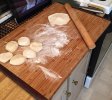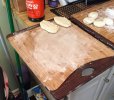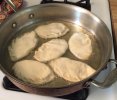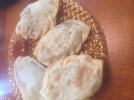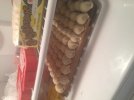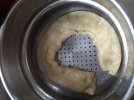- Joined
- Aug 16, 2011
- Messages
- 1,386
Step 1: take some hamburger and add some diced onions, scallions, salt and soy sauce.
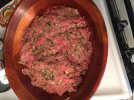
Step 2: take a pinch of the meat and microwave for a minute. Tast the cooked meat, if it needs more salt or soy sauce or whatever, add it to your bowl of meat and microwave another clump. Repeat until it tastes right
Step 3: make dough, ideally from Chinese or Korean flour.
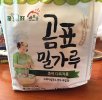
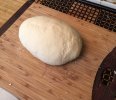
Step 4: roll the dough into a snake shape
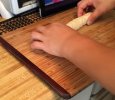
Step 5: cut into medallions
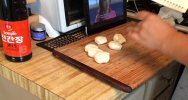
Step 6. Role flat, but leave the middles a little thicker than the sides. Otherwise they'll break. It's easier to do with an Asian style rolling pin which is basically just a wooden dowel.
To be continued...

Step 2: take a pinch of the meat and microwave for a minute. Tast the cooked meat, if it needs more salt or soy sauce or whatever, add it to your bowl of meat and microwave another clump. Repeat until it tastes right
Step 3: make dough, ideally from Chinese or Korean flour.


Step 4: roll the dough into a snake shape

Step 5: cut into medallions

Step 6. Role flat, but leave the middles a little thicker than the sides. Otherwise they'll break. It's easier to do with an Asian style rolling pin which is basically just a wooden dowel.
To be continued...

